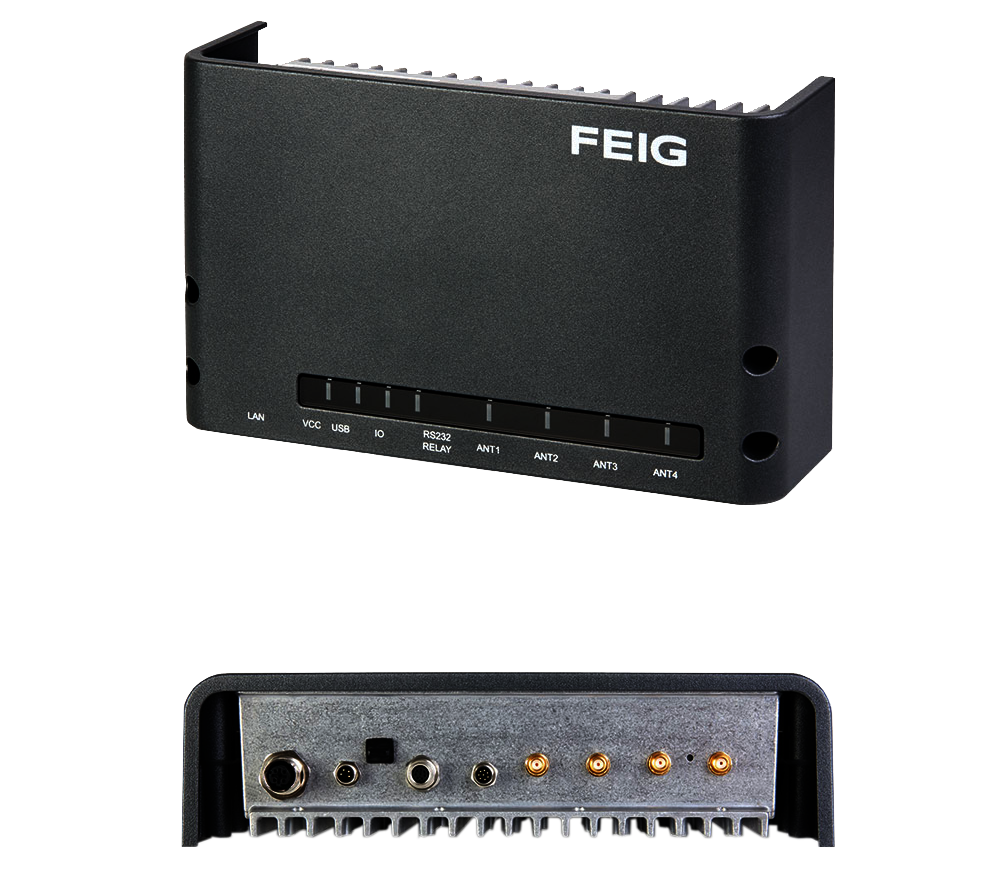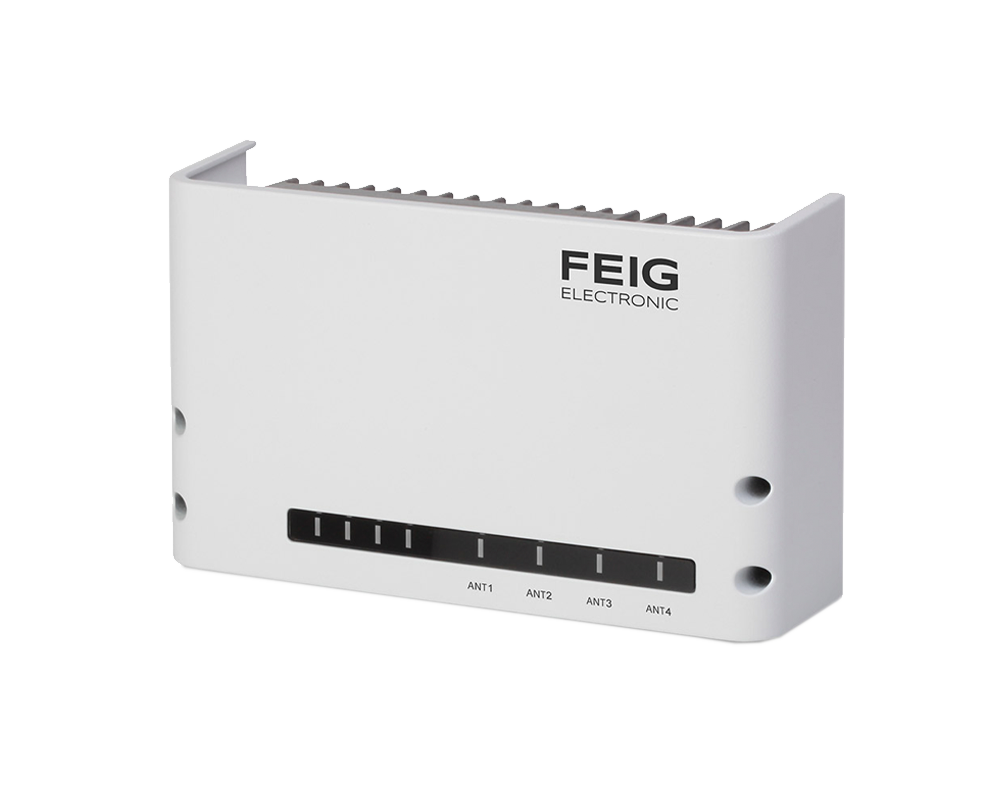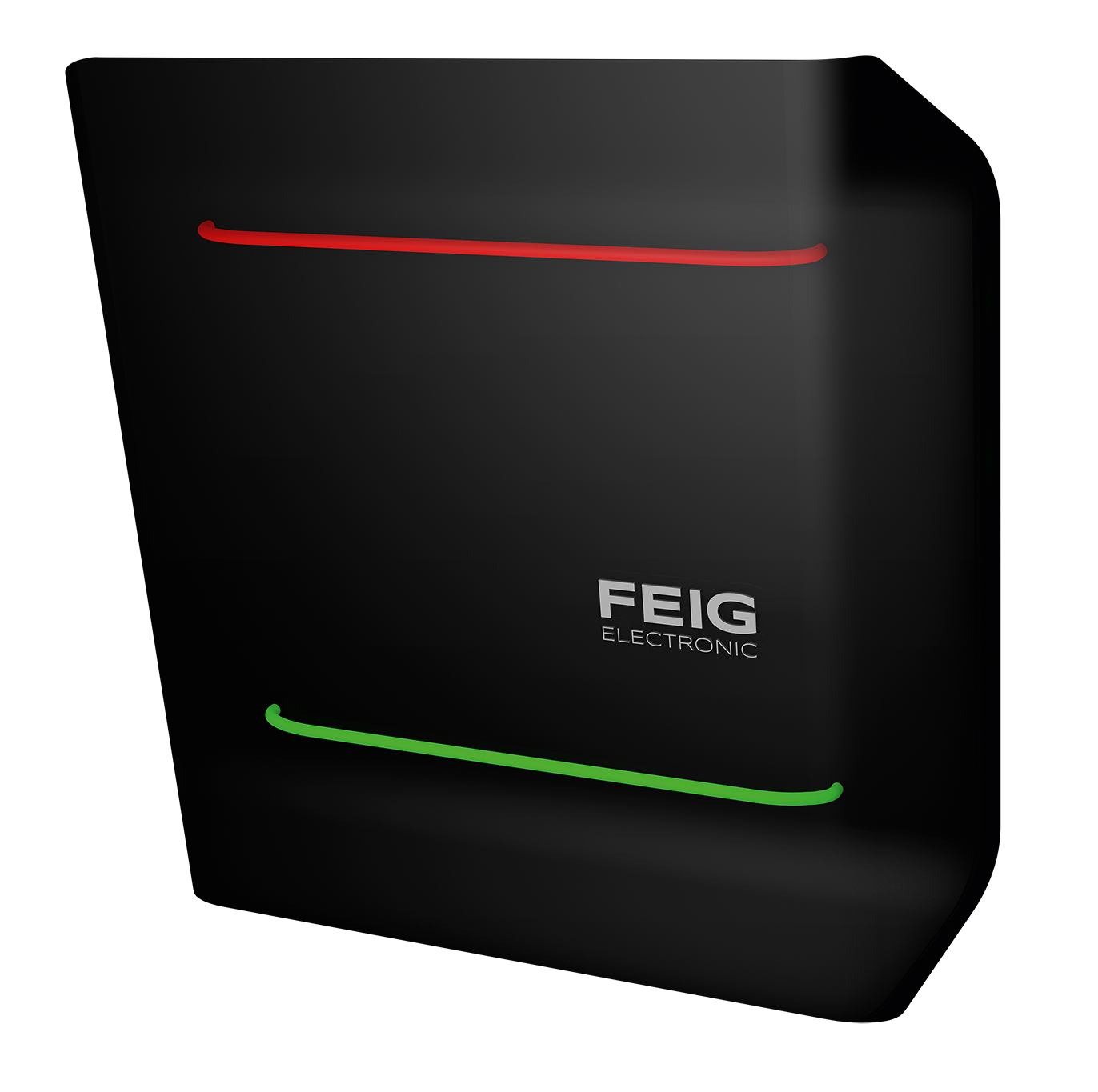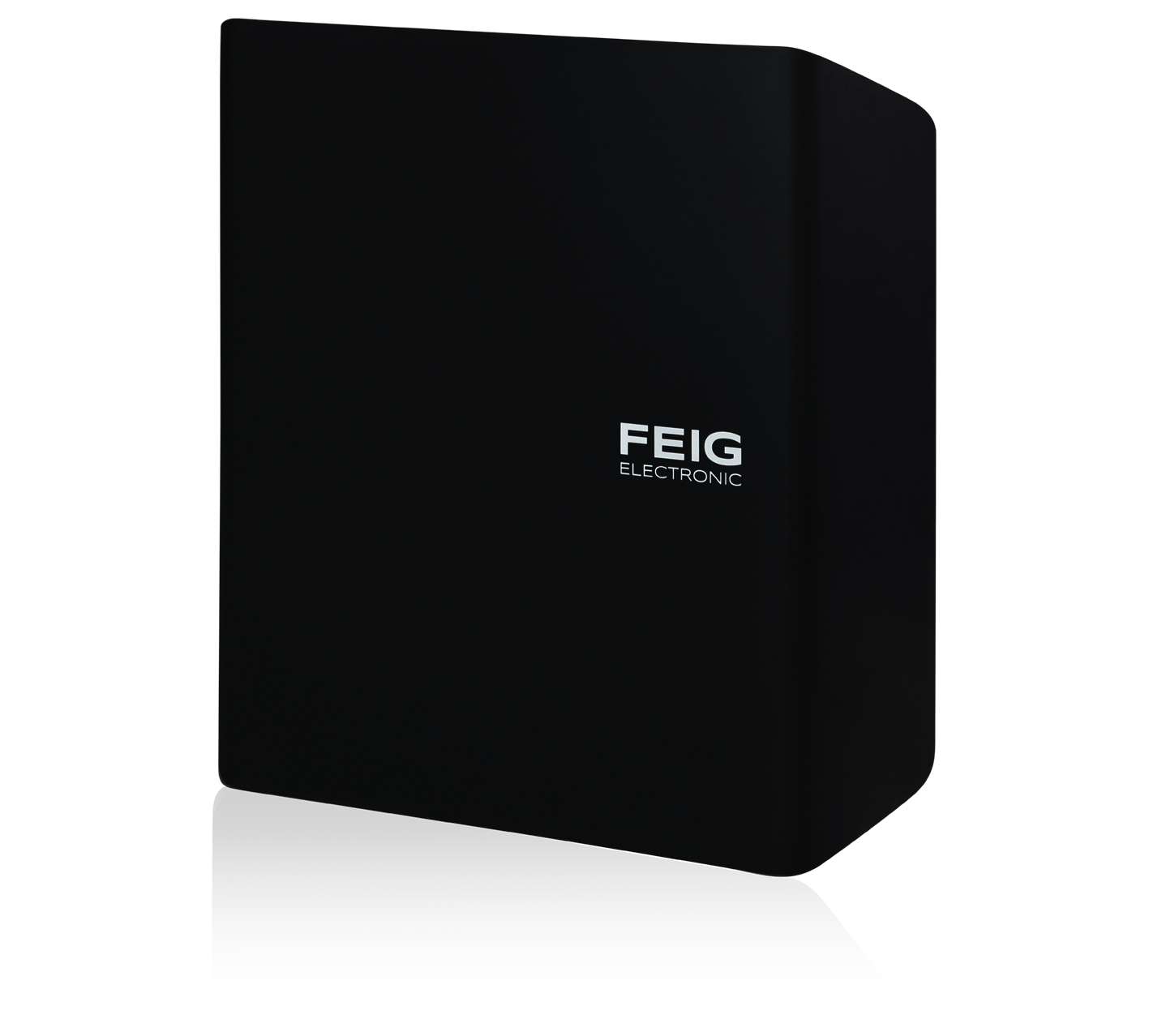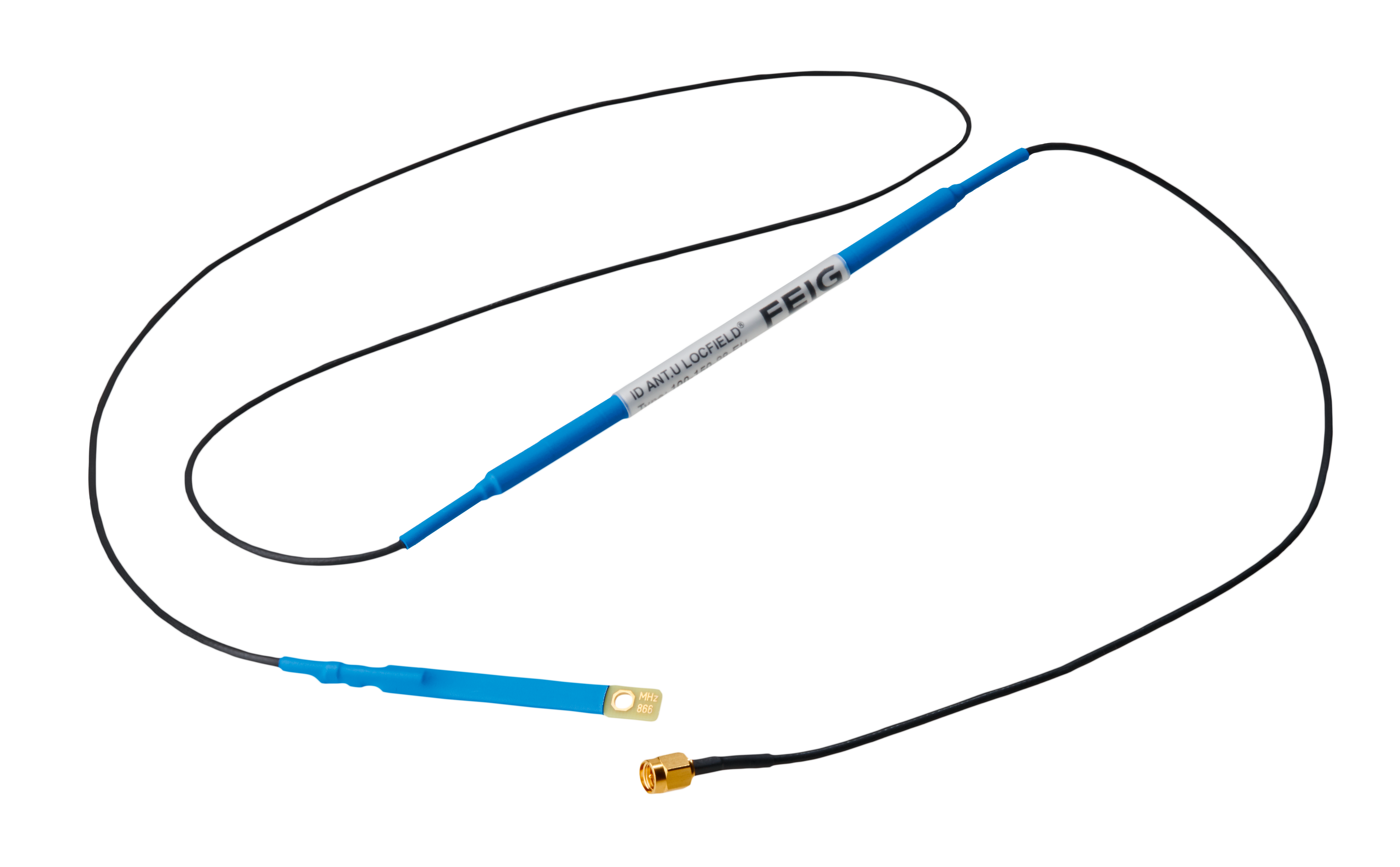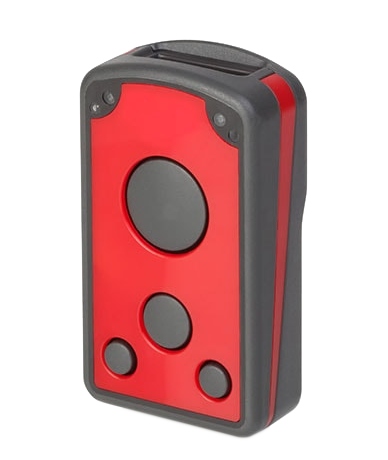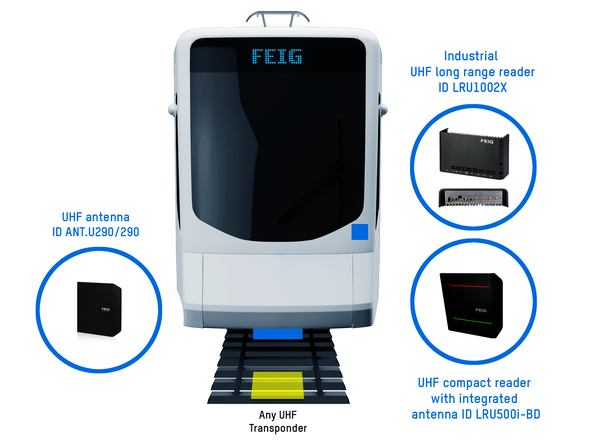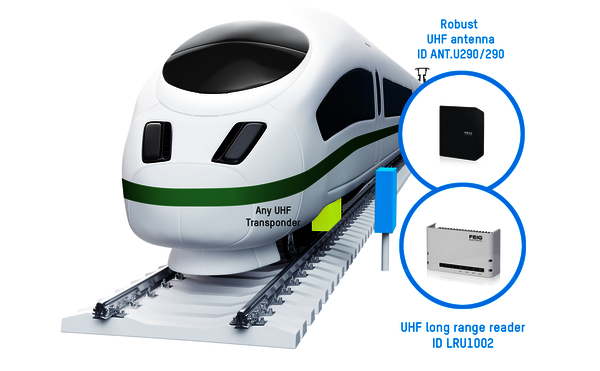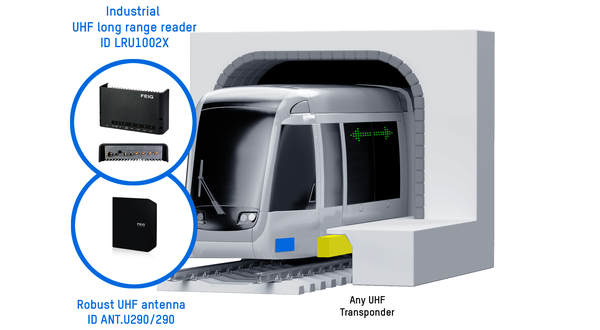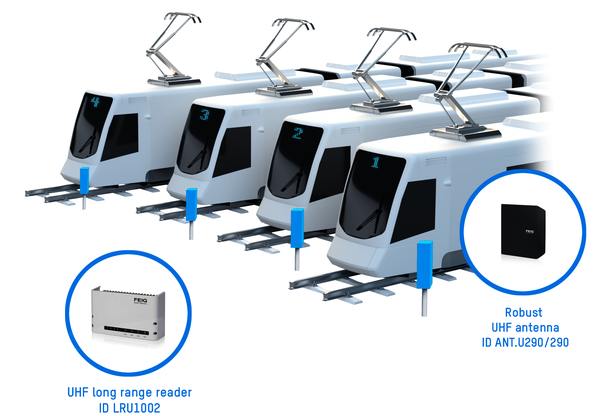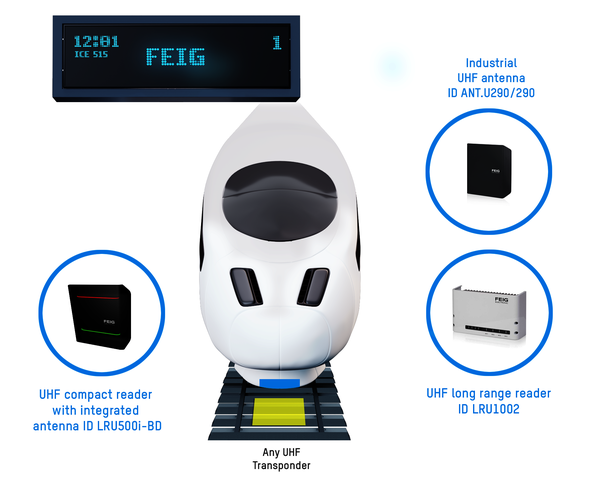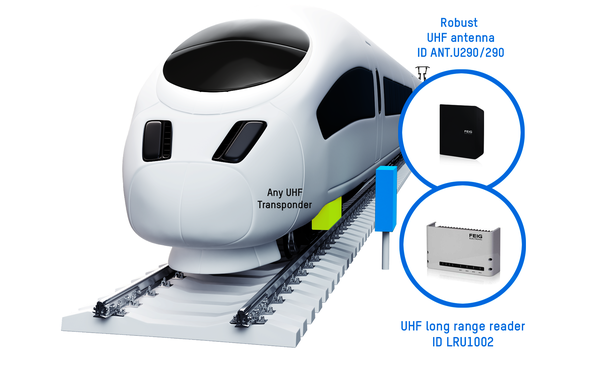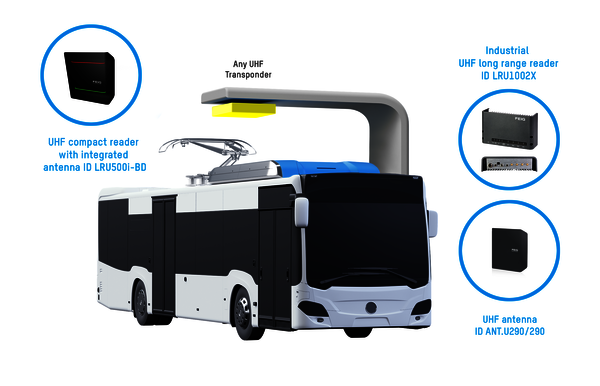RFID for Transportation
RFID components for use in rail and bus traffic
RFID components for several applications
RFID components for use in rail and bus traffic
FEIG has been developing and producing RFID technology for more than 30 years and offers a wide range of UHF products for use in rail and bus transport. Long range readers for use along the track as well as the long range reader ID LRU1002X for on-board solutions tested according to EN 50 155 enable a wide range of applications to make traffic systems more efficient, safer and more reliable.
Loop detectors for traffic monitoring are also offered.
RFID readers and detectors basically transmit the read / detected data to the respective higher-level monitoring or control system.
Our RFID products
Long Range Applications
Long Range Applications
On-board applications
On-board applications
Control of barrier systems
Control of barrier systems
Application examples
For use in rail and bus transport
Positioning
Position markers can be set in or on the track bed using passive, maintenance-free UHF RFID transponders. Robust UHF RFID readers and antennas tested according to railway standards, which are installed on or under the vehicle, recognize the transponders and thus the current position of the train, metro, tram or buses. The position determination works precisely (with assignment to the track) and reliably even with tracks running close together, in tunnels, in street canyons or in bad weather conditions. Higher-level systems can use location determination and, for example, ensure safe rail operations in combination with other systems. In addition, the location information can be used as a trigger for a variety of systems, such as the activation of automatic top of rail treatment. Further application examples can be found on this website.
Trackside / Wayside detection
Passive UHF RFID transponders uniquely identify locomotives, wagons or individual train components. For example, there exist globally accepted standards and specifications for labeling from GS1®. Robust and reliable UHF RFID readers and antennas installed along the track automatically recognize the passing and clearly marked train sets or the individual train components. There are many use cases from optimized maintenance to pure information about which train set passes which detection point. You will find some suggestions further on this website.
Automatic and selective door opening
Another on-board application is the automatic and selective door opening. The reader on the train identifies the transponders placed on the platform or in the track bed, transmits the data to the higher-level system and the train control system opens the doors facing the platform.
If the train is longer than the platform, the doors are opened selectively. If platform screen doors are present, they are opened together with the train doors for the purpose of passenger exchange.
Optimization of maintenance processes
Maintenance and cleaning processes must be optimally planned and coordinated so that the long trains are also available in the morning at the beginning of rush hour. The identification of the rolling stock in conjunction with direction recognition when entering and leaving the service facilities ensures that the specified sequence for maintenance and cleaning is adhered to and documented. RFID long range readers ensure error-free identification and process optimisation.
Passenger information systems
Thanks to the UHF RFID-based, reliable and low-maintenance position determination, the passenger information system can always be supplied with up-to-date data. Tunnels or street canyons have no effect on the RFID system, which precisely recognizes the transponder markers in or on the track bed down to the track.
Condition monitoring
Third-party systems, such as axle counting and weighing systems, can use the UHF-RFID-supported wagon and train recognition to clearly assign the recorded measurement data to this wagon or locomotive. The digital twin is “fed” with the data. By recognizing trends, upcoming maintenance work can be planned in advance.
Pantograph activation
Electromobility is of course also important in local public transport. But not everywhere trams and electric buses can be supplied with electricity via the pantograph. In the case of electric buses, charging is typically only carried out at the bus stops. Optimum use of the loading time is most important. Passive, maintenance-free UHF RFID transponders installed in the track bed or at bus stops are detected using robust UHF RFID long-range readers and antennas installed on the rail vehicle or bus. The pantograph can be activated or deactivated by recognizing the unique ID of this transponder.
How can we help you?
Let us show you your options for RFID solutions.
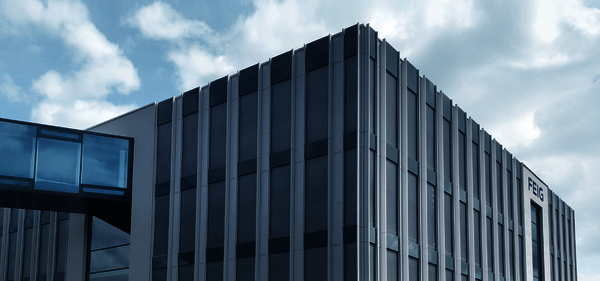
"Made in Germany" Quality
FEIG ELECTRONIC has been a development partner and specialist in contactless identification (RFID), control electronics, traffic sensors and payment terminals for more than 50 years. From our headquarters in Weilburg, Germany, the ca. 400 people who work for us contribute to technological progress by developing innovative solutions for a wide range of applications and industries.
